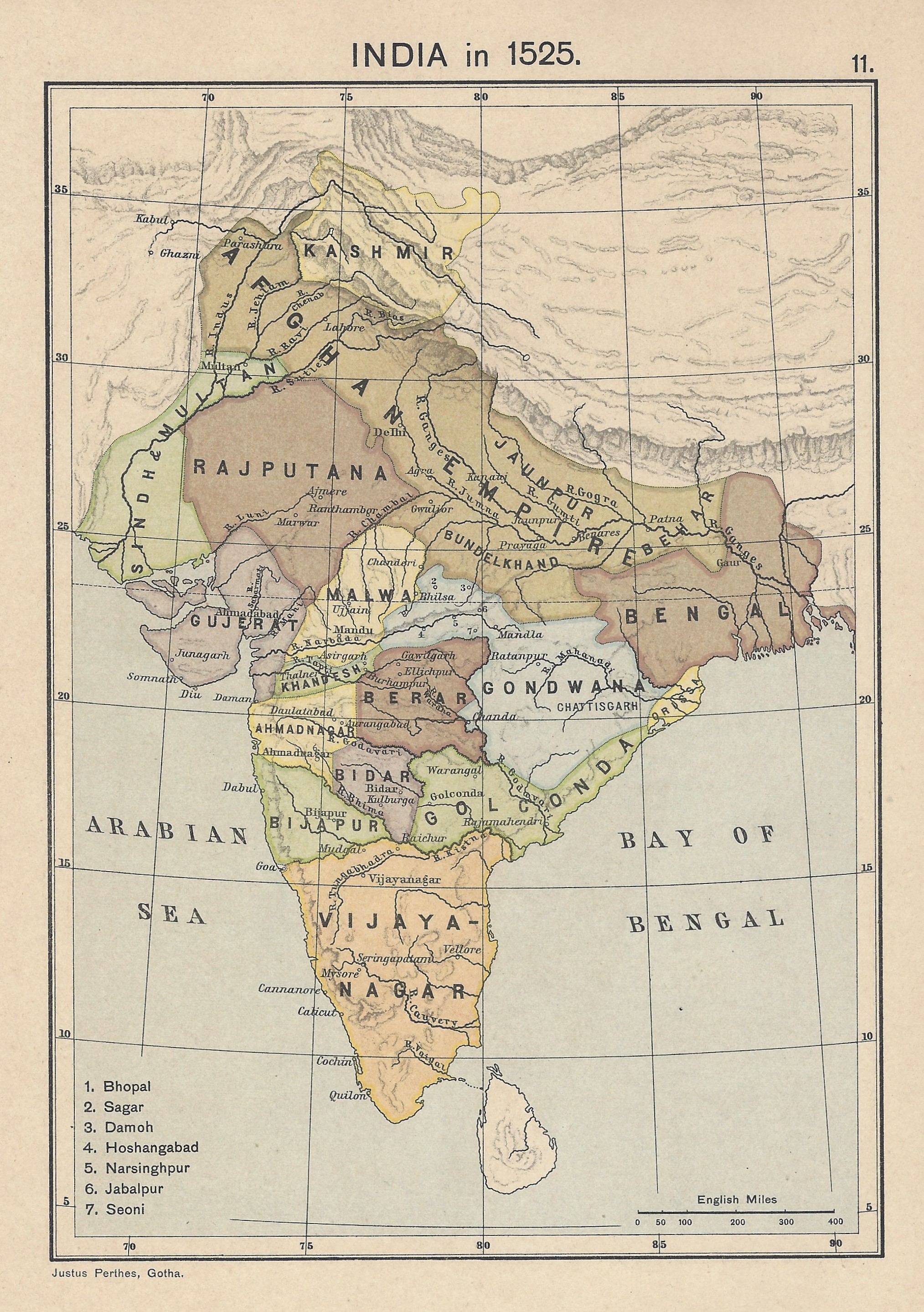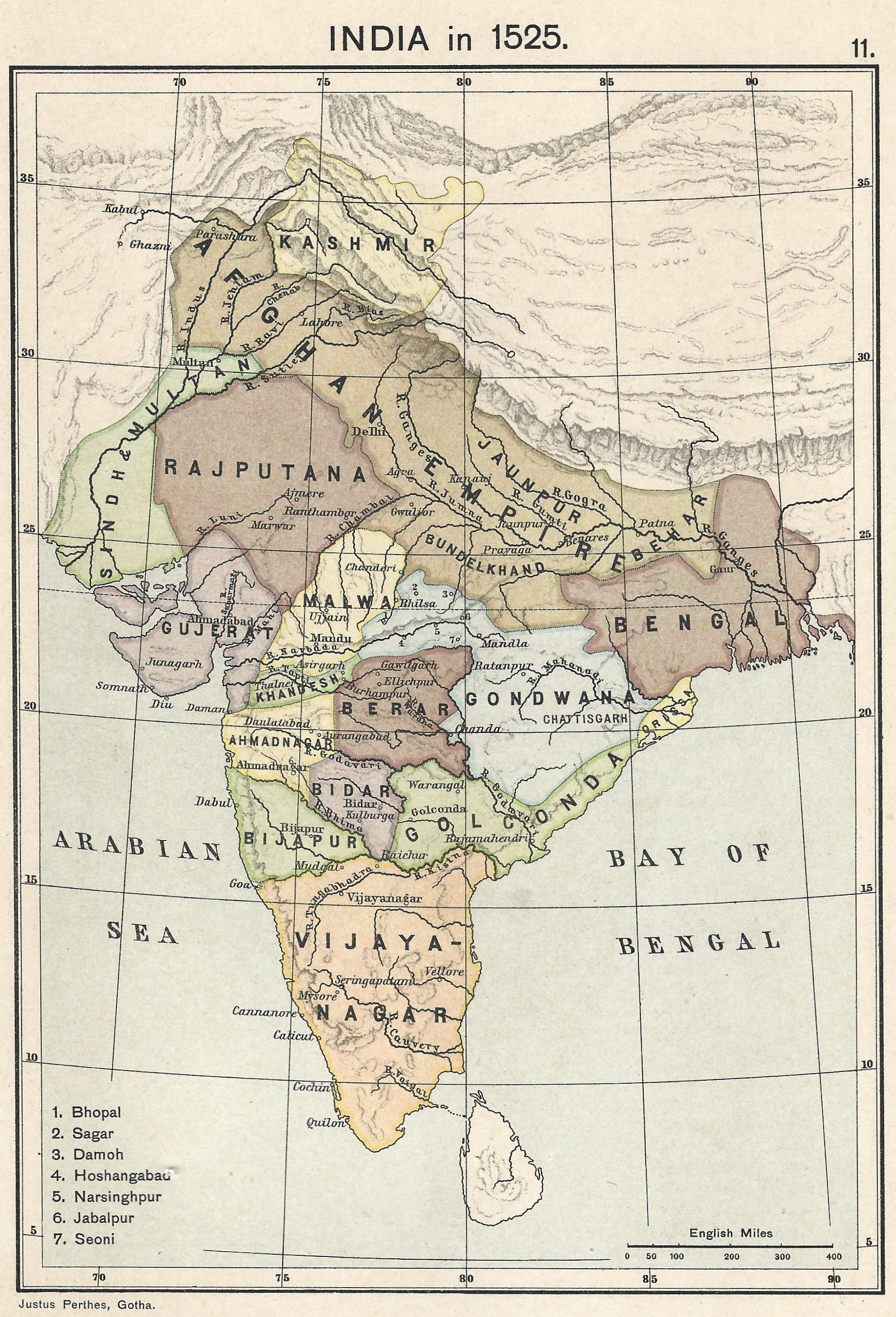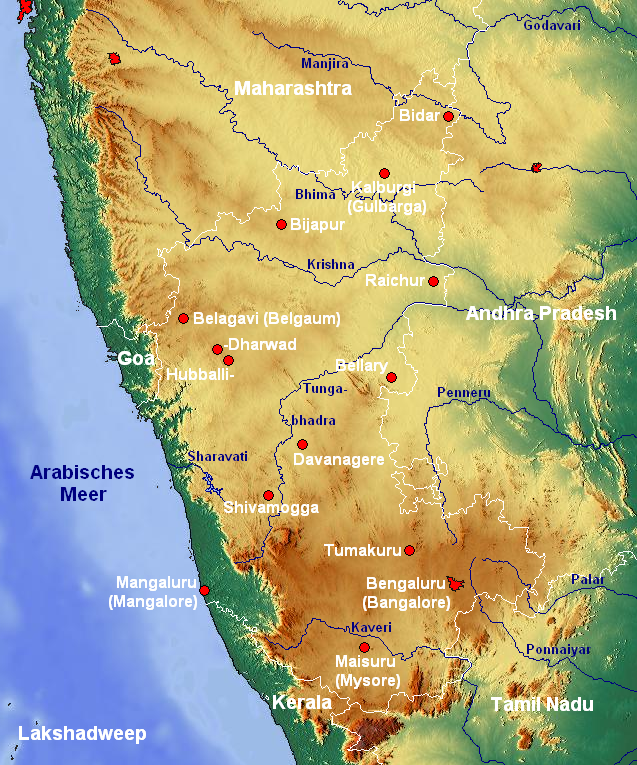|
Adilshah
The Sultanate of Bijapur was an early modern kingdom in the western Deccan and South India, ruled by the Muslim Adil Shahi (or Adilshahi) dynasty. Bijapur had been a ''taraf'' (province) of the Bahmani Kingdom prior to its independence in 1490 and before the kingdom's political decline in the last quarter of the 15th century. It was one of the Deccan sultanates, the collective name of the kingdom's five successor states. The Sultanate of Bijapur was one of the most powerful states on the Indian Subcontinent at its peak, second to the Mughal Empire which conquered it in 1686 under Aurangzeb. After emigrating to the Bahmani Sultanate, Yusuf Adil Shah rose through the ranks to be appointed governor of the province of Bijapur. In 1490, he created a ''de facto'' independent Bijapur state which became formally independent with the Bahmani collapse in 1518. The Bijapur Sultanate's borders changed considerably throughout its history. Its northern boundary remained relatively stable ... [...More Info...] [...Related Items...] OR: [Wikipedia] [Google] [Baidu] [Amazon] |
Bijapur
Bijapur (officially Vijayapura) is the district headquarters of Bijapur district of the Karnataka state of India. It is also the headquarters for Bijapur Taluk. Bijapur city is well known for its historical monuments of architectural importance built during the rule of the Adil Shahi dynasty. It is also well known for the popular Karnataka premier league team, the Bijapur Bulls. Bijapur is located northwest of the state capital Bangalore and about from Mumbai and north east of the city of Belgaum. The city was established in the 10th–11th centuries during the time of Kalyani Chalukyas and was known as ''Vijayapura'' (city of victory). The city was passed to Yadavas after Chalukya's demise. In 1347, the area was conquered by the Bahmani Sultanate. After the split of the Bahmani Sultanate, the Bijapur Sultanate ruled from the city. Relics of the Sultanates' rule can be found in the city, including the Bijapur Fort, Bara Kaman, Jama Masjid, and Gol Gumbaz. Bijapur, ... [...More Info...] [...Related Items...] OR: [Wikipedia] [Google] [Baidu] [Amazon] |
Yusuf Adil Shah
Yusuf Adil Shah (1450 – 5 December 1510), referred as Yusuf Adil Khan or Hidalcão by the Portuguese, was the founder of the Adil Shahi dynasty that ruled the Sultanate of Bijapur for nearly two centuries. As the founder of the Adil Shahi dynasty, Yusuf Adil Shah is credited with developing the town of Bijapur and elevating it to significant status. Legends of origin Yusuf Adil Shah may have been a Georgian slave who was purchased by Mahmud Gawan. Other historians mentioned him of Persian or Turkmen origin. According to the narrative presented by contemporary historian Firishta, Yusuf was a son of the Ottoman Sultan Murad II, although this is considered unfounded by modern historians. Another theory states he was a Turkman of the Aq-Quyunlu. Career Yusuf's bravery and personality raised him rapidly in the Bahmani sultan's favor, and resulted in his appointment as Governor of Daulatabad. The Bahmani Sultanate's last major sultan, Mahmood Shah Bahmani II, gave him the ... [...More Info...] [...Related Items...] OR: [Wikipedia] [Google] [Baidu] [Amazon] |
Maharashtra
Maharashtra () is a state in the western peninsular region of India occupying a substantial portion of the Deccan Plateau. It is bordered by the Arabian Sea to the west, the Indian states of Karnataka and Goa to the south, Telangana to the southeast and Chhattisgarh to the east, Gujarat and Madhya Pradesh to the north, and the Indian union territory of Dadra and Nagar Haveli and Daman and Diu to the northwest. Maharashtra is the second-most populous state in India, the third most populous country subdivision in South Asia and the fourth-most populous in the world. The state is divided into 6 divisions and 36 districts. Mumbai is the capital of Maharashtra due to its historical significance as a major trading port and its status as India's financial hub, housing key institutions and a diverse economy. Additionally, Mumbai's well-developed infrastructure and cultural diversity make it a suitable administrative center for the state, and the most populous urban are ... [...More Info...] [...Related Items...] OR: [Wikipedia] [Google] [Baidu] [Amazon] |
Sultanate Of Golconda
The Sultanate of Golconda (; ) was an early modern kingdom in southern India, ruled by the Persianate, Shia Islamic Qutb Shahi dynasty of Turkoman origin. After the decline of the Bahmani Sultanate, the Sultanate of Golconda was established in 1518 by Quli Qutb Shah, as one of the five Deccan sultanates. The kingdom extended from parts of the modern-day Indian states of Karnataka, Andhra Pradesh, Odisha and Telangana. The Golconda sultanate was constantly in conflict with the Adil Shahis and Nizam Shahis, which it shared borders with in the seventeenth century to the west and northwest.C.E. Bosworth, ''The New Islamic Dynasties'', (Columbia University Press, 1996), 328. In 1636, Mughal emperor Shah Jahan forced the Qutb Shahis to recognize Mughal suzerainty and pay periodic tributes. The dynasty came to an end in 1687 during the reign of its seventh sultan Abul Hasan Qutb Shah, when the Mughal ruler Aurangzeb arrested and jailed Abul Hasan for the rest of his life in Daula ... [...More Info...] [...Related Items...] OR: [Wikipedia] [Google] [Baidu] [Amazon] |
Marathi Language
Marathi (; , 𑘦𑘨𑘰𑘙𑘲, , ) is a Classical languages of India, classical Indo-Aryan languages, Indo-Aryan language predominantly spoken by Marathi people in the Indian state of Maharashtra and is also spoken in Goa, and parts of Gujarat, Karnataka and the territory of Dadra and Nagar Haveli and Daman and Diu. It is the official language of Maharashtra, and an additional official language in the state of Goa, where it is used for replies, when requests are received in Marathi. It is one of the 22 scheduled languages of India, with 83 million speakers as of 2011. Marathi ranks 13th in the List of languages by number of native speakers, list of languages with most native speakers in the world. Marathi has the List of languages by number of native speakers in India, third largest number of native ... [...More Info...] [...Related Items...] OR: [Wikipedia] [Google] [Baidu] [Amazon] |
Mughal Empire
The Mughal Empire was an Early modern period, early modern empire in South Asia. At its peak, the empire stretched from the outer fringes of the Indus River Basin in the west, northern Afghanistan in the northwest, and Kashmir in the north, to the highlands of present-day Assam and Bangladesh in the east, and the uplands of the Deccan Plateau in South India.. Quote: "The realm so defined and governed was a vast territory of some , ranging from the frontier with Central Asia in northern Afghanistan to the northern uplands of the Deccan plateau, and from the Indus basin on the west to the Assamese highlands in the east." The Mughal Empire is conventionally said to have been founded in 1526 by Babur, a Tribal chief, chieftain from what is today Uzbekistan, who employed aid from the neighboring Safavid Iran, Safavid and Ottoman Empires Quote: "Babur then adroitly gave the Ottomans his promise not to attack them in return for their military aid, which he received in the form of the ... [...More Info...] [...Related Items...] OR: [Wikipedia] [Google] [Baidu] [Amazon] |
Siege Of Bijapur
The siege of Bijapur began in March 1685 and ended in September 1686 with a Mughal victory. The siege began when Aurangzeb dispatched his son, Muhammad Azam Shah, with a force of nearly 50,000 men to capture Bijapur Fort and defeat Sikandar Adil Shah, the then Sultan of Bijapur, who had refused to be a vassal of the Mughal Empire. The siege of Bijapur was one of the longest military engagements of the Mughals, lasting more than 15 months, until Aurangzeb personally arrived to organise a victory. Background In 1637, the young prince Aurangzeb was the Viceroy of the Deccan under the reign of his father, the Mughal Emperor Shah Jahan. He led a 25,000-strong Mughal army and besieged Bijapur Fort, protecting the capital of the Sultanate of Bijapur, and its ruler Mohammed Adil Shah. The siege, however, was unsuccessful as the Adil Shahi dynasty sought peace with Shah Jahan, mainly through the cooperation of his son and Aurangzeb's brother Dara Shikoh. Ali Adil Shah II inhe ... [...More Info...] [...Related Items...] OR: [Wikipedia] [Google] [Baidu] [Amazon] |
Aurangzeb
Alamgir I (Muhi al-Din Muhammad; 3 November 1618 – 3 March 1707), commonly known by the title Aurangzeb, also called Aurangzeb the Conqueror, was the sixth Mughal emperors, Mughal emperor, reigning from 1658 until his death in 1707, becoming the second longest-ruling emperor of Hindustan (48 years and 7 months). Under his reign, the Mughal Empire reached its greatest extent, with territory spanning nearly the entirety of the Indian subcontinent. Aurangzeb and the Mughals belonged to a branch of the Timurid dynasty. He held administrative and military posts under his father Shah Jahan () and gained recognition as an accomplished military commander. Aurangzeb served as the viceroy of the Viceroy of the Deccan, Deccan in 1636–1637 and the governor of Gujarat under Mughal Empire, Gujarat in 1645–1647. He jointly administered the provinces of Subah of Multan, Multan and Sind State, Sindh in 1648–1652 and continued expeditions into the neighboring Safavid Iran, Safavid ter ... [...More Info...] [...Related Items...] OR: [Wikipedia] [Google] [Baidu] [Amazon] |
Karnataka
Karnataka ( ) is a States and union territories of India, state in the southwestern region of India. It was Unification of Karnataka, formed as Mysore State on 1 November 1956, with the passage of the States Reorganisation Act, 1956, States Reorganisation Act, and renamed ''Karnataka'' in 1973. The state is bordered by the Lakshadweep Sea to the west, Goa to the northwest, Maharashtra to the north, Telangana to the northeast, Andhra Pradesh to the east, Tamil Nadu to the southeast, and Kerala to the southwest. With 61,130,704 inhabitants at the 2011 census, Karnataka is the List of states and union territories of India by population, eighth-largest state by population, comprising 31 List of districts in India, districts. With 15,257,000 residents, the state capital Bengaluru is the largest city of Karnataka. The economy of Karnataka is among the most productive in the country with a gross state domestic product (GSDP) of and a per capita GSDP of for the financial year 2023– ... [...More Info...] [...Related Items...] OR: [Wikipedia] [Google] [Baidu] [Amazon] |
Raichur Doab
The Raichur Doab is a Doab, in this case the triangular region of land in the southern Indian states of Telangana and Karnataka lying between the Krishna River and its tributary, the Tungabhadra River. The doab is named for the town of Raichur in the Raichur District. The Raichur Doab is considered to be very fertile because of the sediments carried by Krishna and Tungabhadra rivers. The doab includes Raichur district and Koppal district in Karnataka, and Gadwal district in Telangana. Some areas of Raichur doab also called as Nadigadda region became a part of Telangana during Andhra Pradesh Reorganisation Act in 2014.Those areas are Gadwal, Alampur and Maganoor. Gadwal is one of the 31 districts of Telangana State. Resources Hatti Gold Mines: Situated in Hatti of Lingasugur taluk, is currently the only working gold mine in India. Evidently, it is one of the oldest mines dating back to Pre Ashokan times. During late 19th century, the gold mines were rediscovered. Raichur ... [...More Info...] [...Related Items...] OR: [Wikipedia] [Google] [Baidu] [Amazon] |
Deccan Sultanates
The Deccan sultanates is a historiographical term referring to five late medieval to early modern Persianate Indian Muslim kingdoms on the Deccan Plateau between the Krishna River and the Vindhya Range. They were created from the disintegration of the Bahmani Sultanate and ruled by various dynasties: namely Ahmadnagar, Berar, Bidar, Bijapur, and Golconda. The five sultanates owed their existence to the declaration of independence of Ahmadnagar in 1490, which was followed by Bijapur and Berar in the same year. Bidar became independent in , and Golconda in 1512. Although the five sultanates were all ruled by Muslims, their founders were of diverse origins: the Nizam Shahi dynasty, the ruling family of the Ahmadnagar Sultanate, was founded by Malik Hasan Bahri, a Deccani Muslim of Brahmin origin; the Berar Sultanate by a Kannadiga Hindu Brahmin slave brought up as a Deccani Muslim; the Bidar Sultanate was founded by a Georgian slave; the Bijapur Sultanate was founded by ... [...More Info...] [...Related Items...] OR: [Wikipedia] [Google] [Baidu] [Amazon] |








